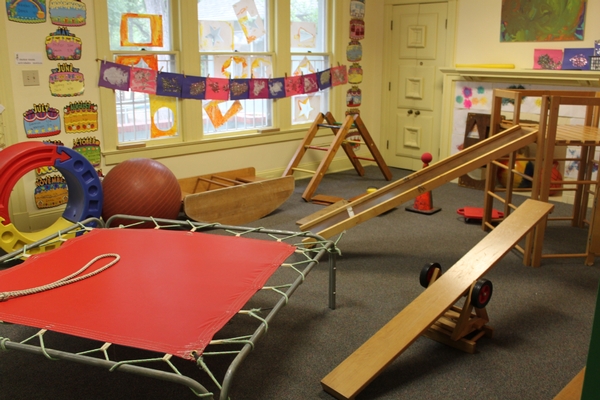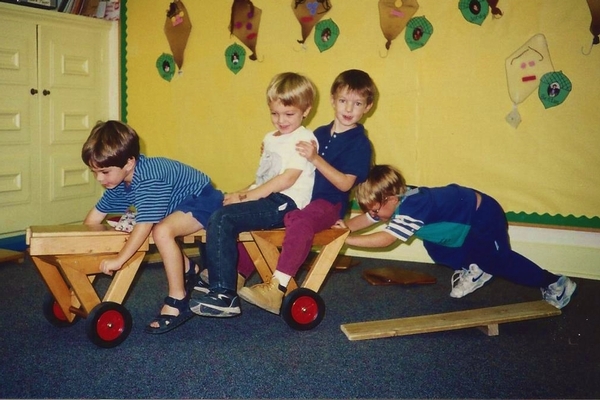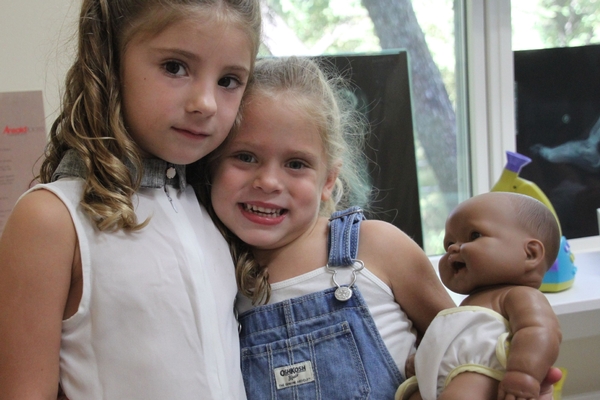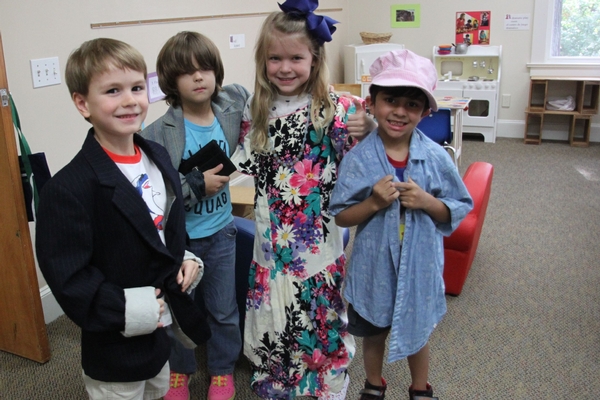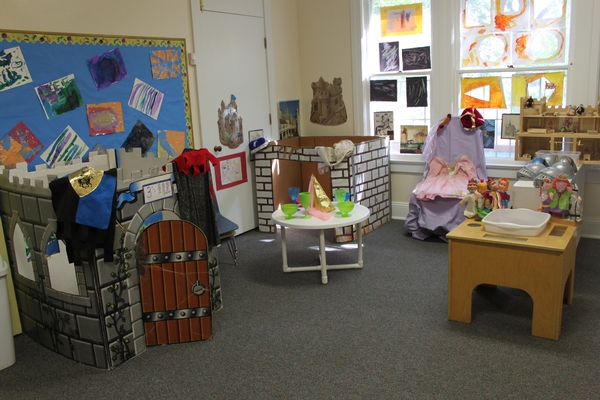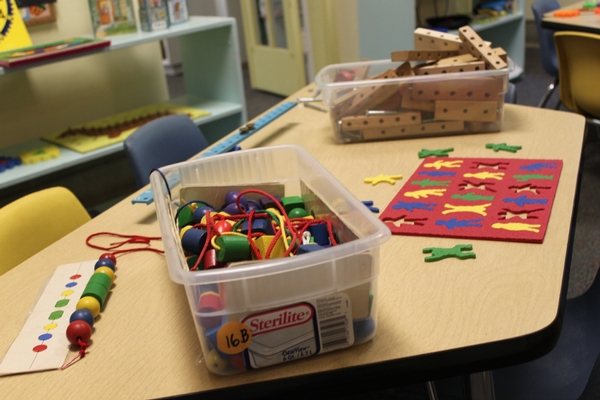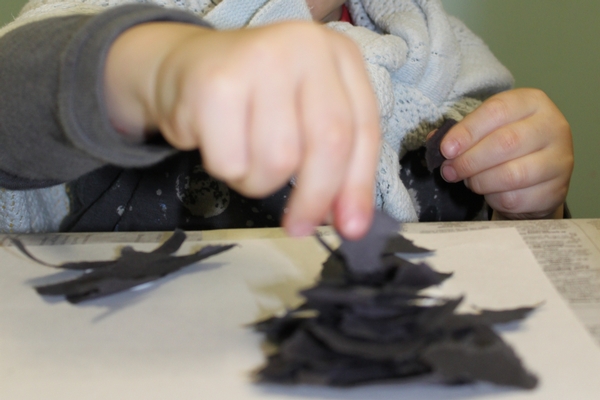The Acorn Philosophy and Curriculum
The Acorn follows the principles of Child Development, including the studies of Piaget, Erikson, and others. Children learn concretely, interacting with real materials in meaningful ways. By experiencing their world through all their senses, they develop an understanding of their environment. We encourage creative thinking, exploring the many different ways we can approach an activity. Children develop at their own pace on their own timetable. At The Acorn, activities are planned to set each child up for success, instilling a love of learning and a curiosity which inspires interesting discoveries. Individual goals are set for each child based on their developmental level.
Curriculum Highlights
- Developmentally Appropriate Activities
- Great 5/1 Student/Teacher Ratio
- Spacious classrooms
- Social and Emotional Development
- Large Motor Skills
- Language Skills
- Fine Motor Skills, Manipulatives
- Dramatic Play, Blocks
- Creative Art
- Special Activities
- Kindergarten
- Music and Spanish
The Acorn offers developmentally appropriate activities that allow children to explore, discover, and learn in center based classrooms. Each class , which occupies the entire floor, featuring three or four rooms divided up into different centers and interest areas.
Large motor activities: The development of large motor skills is of great importance in these early years, since motor development is so closely related to self-confidence and is a precursor to fine motor development.
Books, science, nature, manipulative toys and equipment: These areas help develop fine motor abilities, perceptual skills, love of nature and the environment, and an appreciation for books and reading.
Dramatic play and block area: The dramatic play area is completely changed every few weeks and is important because it provides our children with the opportunity to role play and possibly to work through situations in their lives. The block area allows a generous space for the children to be creative with all sizes of building blocks, transportation toys, and other accessories. It’s an important area for creativity, cooperative play, and exploring the concepts of size, shape, space, balance, etc.
The art room offers all kinds of imaginative, often messy activities. We take a very creative approach to art and are process oriented, avoiding product oriented, teacher directed art. Our goal is to open up the children’s minds to the idea that there are lots of different, creative ways to use any given medium.
Our daily schedule includes large group activities, free play time, and small group activities. Our outdoor play time is very important and is an integral part of our total program. Our large, well equipped playground provides an opportunity for large motor development and social interaction. We utilize the outdoors as an extension of the classroom.
Spanish and Music classes are offered in all classes except the Two Day Morning Class.
The Acorn Kindergarten
Kindergarten has all the creative, developmentally appropriate attributes of The Acorn preschool classes, with the addition of several unique features.
Reading, just like crawling, walking, toilet learning, etc., is developmental, with each child learning at their own pace. Our main goal is that each child LOVE reading and feel confident about it, no matter what timetable they are on. With our class size and teacher ratio, we are able to individualize to each child’s developmental level. Each year a class may have a range of “readers” from those just barely “breaking the code” who are reading very simple predictable stories, to those reading at a 2nd or 3rd grade level.
The Language Experience Approach to Reading uses many meaningful ways to bring a print rich environment to the children. A message of the day starts from the very first day of school, and progresses throughout the year. Concepts such as capitalization, punctuation, sentence structure, and grammar rules are learned just by being presented each day in a real and useful way. These ideas become a part of the child’s knowledge without ever needing to learn the “rules” of grammar, but by using them in a real life situation. The children keep journals and make class books, and build a word wall as they learn to spell throughout the year. The children use invented spelling in creative writing, and as they develop an “ear” for phonics, their writing and spelling shows growth and improvement throughout the year. Reading and Writing is interwoven throughout the entire curriculum.
The Math program is based in a hands-on approach with Mathematics Their Way as the foundation. It takes a child through a concrete, free exploration level and introduces symbols, math sentences, and problem solving in the symbolic level. Those who are ready can grasp concepts leading into the abstract level.
As the class follows the adventures of The Tortoise and The Hare, the children learn all about the world around them. After reading The Race, an updated version of the story, we ask families to have friends, relatives, etc. who travel or live in other areas to mail postcards to the class. Geography becomes a meaningful subject as we read about different cities, states, and countries on the globe and see postcard pictures of geographical features, monuments, and cultural elements.
Science is another area of curriculum that allows for much experimentation, prediction, and documentation. The children develop an appreciation for nature and the environment as they garden, learn about animals and insects, experiment with various elements, make observations and comparisons, and do “research”.
The children not only have daily opportunities for creative expression in the art element of the curriculum, but they are exposed to the Masters and Fine Art each week. A particular artist is introduced, and after hearing about their techniques and vision, the children can use similar media and explore their own ways of using these new techniques.

